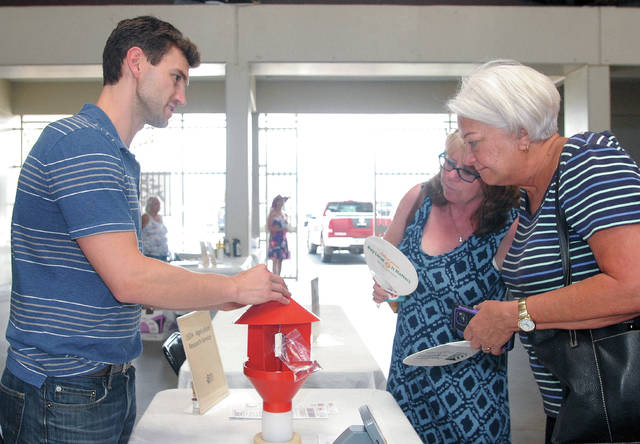KAILUA-KONA — Five years ago, Hawaii Department of Agriculture entomologist Rob Curtiss heard tell of the predatory flat bark beetle and inspiration struck. ADVERTISING KAILUA-KONA — Five years ago, Hawaii Department of Agriculture entomologist Rob Curtiss heard tell of the
KAILUA-KONA — Five years ago, Hawaii Department of Agriculture entomologist Rob Curtiss heard tell of the predatory flat bark beetle and inspiration struck.
Macadamia nut farmers reported the flat bark beetle (FBB) was preying on the invasive tropical nut borer beetle. Curtiss was curious how it might interact with the coffee berry borer beetle (CBB), which was plaguing the growers of Kona’s most notable crop.
He gathered a few samples and did what scientists do — observed. What he found was encouraging.
“I saw that (FBB) crawl up onto the coffee, pick up the immature stages of the CBB and eat them, so that was when I made the first determination that they would eat CBB and potentially be a control method for them,” Curtiss said at the 10th annual Kona Coffee Expo Friday at Old Kona Airport Park.
He relayed the data to Andrea Kawabata, of the University of Hawaii College of Tropical Agriculture and Human Resources, who then shared the information with Peter Follett of the United States Department of Agriculture.
The two ran with the information and by 2014 had received a grant from Curtiss and the HDOA to fund research and outreach. They were given a no-cost extension of the grant in 2016 that will expire this year. Further research will likely be funded by the USDA.
The research team has spent the last three years deciphering how FBB interacts with CBB in the field, outside of optimal lab conditions, at various stages of CBB physical development.
“Right now, we know that (FBB) consume CBB eggs, larva and pupa. We’re still looking into what exact impact they have on the field populations of CBB,” Kawabata said.
Molecular studies of FBB DNA have shown some consumption is taking place naturally, evidenced by the presence of CBB DNA in FBB digestive tracts.
“We know they’re eating CBB in the field, also,” Kawabata said. “What kind of dent they’re putting in that population? We are still working on that.”
Despite incomplete information, CTAHR has been working with farmers for several years, the same way they did Friday when they gave a 30-minute presentation at the expo. CTAHR answers questions and makes FBB kits available so that farmers can raise and release the beetles onto their farms. Kawabata called these “augmented releases” as FBB likely already exist on most farms in some capacity.
More information can be accessed online at hawaiicoffee.weebly.com.
FBB, like CBB, are a non-native species to Hawaii. Curtiss said they’ve been in the state for at least 20 years and their mode of arrival is unknown.
He added they’re not considered invasive, however, because they’re not injurious to native crops or wildlife. FBB are considered pests in some areas of the mainland where they invade grain storage. They don’t pose the same problems in Hawaii because they’re averse to moisture.
That aversion does limit their potential as a biocontrol against CBB because FBB avoid the coffee berry until it has dried out and become a coffee raisin. Thus, the effectiveness of releasing them as a supplement to spraying pesticides like Botanigard is dependent on when the beetles are released.
Ernest Caravalho, who has worked in the industry for 40 years and currently owns and operates a 5-acre coffee farm in Kona, said the CBB are running thick this year, adding he’s already sprayed Botanigard three times.
Releasing FBB now would make little difference, and stores of FBB aren’t likely to help alleviate farms overrun with CBB as far as producing better results for the upcoming harvest. Instead, releasing FBB near harvest time or after the harvest will help to curb the leftover population of CBB and further mitigate their presence by preying on CBB in their immature forms as eggs, larva or pupa.
“My recommendation since the beginning with this beetle has been to wait until your harvest is done or you’re close to being done before you release them into the field,” Curtiss said. “And don’t rely on that as your only method.”
Sanitation measures to remove as many leftover berries from trees and from the ground is also an important measure to help eradicate CBB for the following year’s harvest.
And, of course, pesticide treatments are the most effective and well known.
A bill extending the end date for a pesticide subsidy program that helps coffee farmers pay for approved pesticides passed conference committee on Wednesday. House Bill 186 would extend the program, initially funded to the tune of $500,000 and set to expire in July 2019 or whenever funds dried up, to July 2021.




